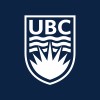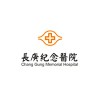
Stroke Patients Receiving Chiropractic Care Post-rehabilitation
StrokeThe Life University Center for Chiropractic Research is conducting a research study to better understand how 12-weeks of chiropractic care differentially affects the post-rehabilitation brain electrical patterns and body movement patterns of individuals who have experienced hemorrhagic versus ischemic stroke The study will involve visits to the Life University Center for Chiropractic Research (CCR) in midtown Atlanta. During the 12 weeks of focused care, chiropractic visits could be several times a week depending on the care plan. In addition to the chiropractic care, individuals will receive a physical examination and three follow-up assessments. The assessments in the CCR will include a non-invasive evaluation of the brain wave patterns using electroencephalography (EEG), completion of a few surveys, a balance assessment and a movement assessment. Qualified individuals will receive study treatment and care at no cost.

Study of Compound Edaravone Injection for Treatment of Acute Ischemic Stroke
Acute Ischemic StrokeThe primary objective of the study is to confirm the efficacy of compound Edaravone Injection via intravenous infusion every 12 hours in the patients with Acute Ischemic Stroke(AIS) in a double-blind, active-controlled manner. The study is also to examine the safety of compound Edaravone Injection for the AIS patients.

Clinical Evaluation of the Combination of Symptoms and Symptoms With General Treatment for Acute...
Acute Hemorrhagic StrokeObjective To evaluate whether Xingnaojing injection combined with Naoxueshu oral liquid can significantly improve the clinical outcome of patients with intracerebral hemorrhage. Secondary objectives included to evaluate whether combined application of Xingnaojing injection and Naoxueshu oral liquid can promote hematoma absorption or reduce perihematoma cerebral edema in patients with intracerebral hemorrhage

Intravenous N-Acetylcysteine for the Treatment of Acute Ischemic Stroke
Acute Ischemic StrokeStroke is a major cause of death and long-term disability in the developed world. While t-PA and mechanical thrombectomy have been shown to decrease disability in properly selected patients, many patients are left with lifelong symptoms. There are currently limited options available for patients who are not candidates for treatment with t-PA and/or mechanical thrombectomy. N-Acetylcysteine (NAC) is an FDA approved antioxidant and anti-inflammatory agent that has been used safely for many years in the treatment of acetaminophen overdose. In studies, the oral form has been shown to improve outcomes in acute ischemic stroke and has been shown to decrease the effects of ischemic brain injury in animal models. In a small human trial, it improved outcomes in patients suffering from mild traumatic brain injury (TBI). The intravenous formulation has a long safety record. It is not FDA approved for treating stroke but was reviewed by the FDA and was given an FDA IND for this study. The investigators propose a prospective randomized, double-blind, placebo-controlled study to evaluate the efficacy of administering intravenous N-acetylcysteine to patients with acute ischemic stroke. Eligible subjects will receive a commercially available form of intravenous NAC (Acetadote®) through for the first 21 hours following their enrollment. Patients enrolled who receive t-PA for thrombolysis will have their intravenous NAC infusion delayed for 24 hours after the completion of their t-PA infusion. Patients undergoing thrombectomy will be excluded from enrollment. Subjects will be evaluated by emergency department and/or division of neurology physicians at the time of enrollment, during their hospitalization, as well as 30 days and 90 days after enrollment. At each visit, subjects will be assessed for functional status and quality of life. This study is designed to compare the efficacy of intravenous N-acetylcysteine compared to normal treatment in patients with acute ischemic stroke.

Reaching Training Based on Robotic Hybrid Assistance for Stroke Patients
StrokeStroke is the third most common cause of death and the main cause of acquired adult disability in high-income countries. The most common deficit after stroke is motor impairment of the contralateral arm, with more than 80% of stroke survivors experiencing this condition in the acute phase, and only half regaining some useful upper limb function after six months. Within the European project RETRAINER (grant agreement No 644721), the consortium developed a platform for the rehabilitation of the upper limb after stroke, which combines a passive arm exoskeleton for weight relief supporting both shoulder and elbow movements, Functional Electrical Stimulation (FES) of the two-most impaired muscles of the affected side, interactive objects, and voluntary effort. The system also provides a graphical user interface which helps the therapist set the training session and save the training data and parameters, and provides the subject a visual feedback about his/her active involvement in the exercise. The training consists of the execution of a series of exercises involving the affected arm during daily life activities. Typical exercises are anterior reaching on a plane or in the space, moving an object on a plane or in the space, moving the hand to the mouth, with or without an object in the hand, and lateral elevation of the shoulder. The aim of this clinical study it to evaluate the efficacy of this novel training platform on patients between two weeks and nine months after their first stroke, who preserved at least a visible muscle contraction for the arm and shoulder muscles. Participants are randomized in an experimental and a control group. The control group is trained with an advanced rehabilitative program, including physical training, occupational therapy, FES, and virtual reality, while the experimental group is trained with the RETRAINER system for about 30 minutes, in addition to the same program of the control group. The daily training time is the same for the two groups. The intervention consists of three sessions a week for nine weeks. Patients are assessed at baseline, soon after the end of the intervention, and in a 4-week follow-up visits. It is planned to recruit 68 subjects for this study. Since the RETRAINER platform was built on the up-to-date theory of motor re-learning, which supports task-oriented repetitive training, a close temporal association between motor intention and stimulated motor response, and an intensive and frequent training paradigm, the study's hypothesis is that the experimental group shows a greater treatment effect than the control group.

Xingnaojing for Moderate-to-severe Acute Ischemic Stroke (XMAS)
Acute Ischemic StrokeThe main purpose of this trial is to determine whether Xingnaojing, intravenously administered within 24 hours of symptom onset, improves the 3-month outcome in participants with acute ischemic stroke.

Clinical Applicability of Robot-assisted Gait Training System in Acute Stroke Patients
StrokeInvestigation of the clinical feasibility and efficacy of a newly developed robot-assisted gait training system for acute stroke survivors. It is anticipated that robot-assisted gait rehabilitation will achieve significantly better gait and quality of life outcomes than the standing table rehabilitation.

Tele-rehabilitation in the Home With Gaming as a Method of Improving Upper Extremity Function After...
StrokeHemiplegiaThe purpose of the study is to determine whether a novel computer gaming hand exercise regimen would improve hand and arm function and be feasible in people with hemiplegia after Stroke affecting the hand.

Hyperbaric Oxygen Post Established Stroke
StrokeIschemic Stroke1 moreThe purpose of this study is to examine the role of Hyperbaric Oxygen Therapy (HBOT) in improving neurological function in patients who are 6 to 36 months post ischemic stroke.

Botulinim Toxin Type A Injections by Different Guidance in Stroke Patients With Spasticity on Upper...
Cerebrovascular AccidentThe aims of this study were to compare the injection locations of key spastic muscles on upper extremity by three different guidance localization methods ( surface anatomy landmark, ultrasonography, electric stimulation) and the effectiveness.
